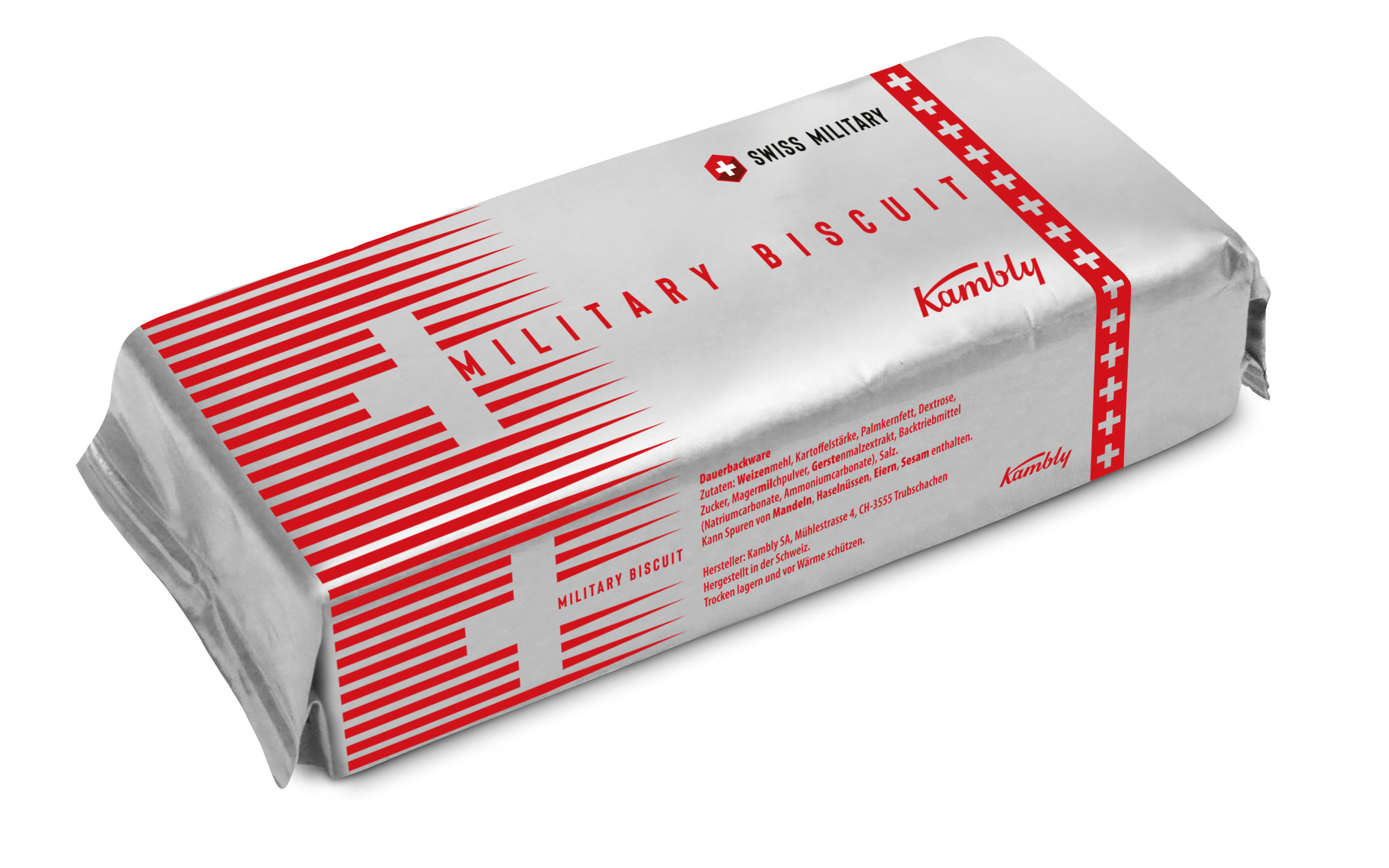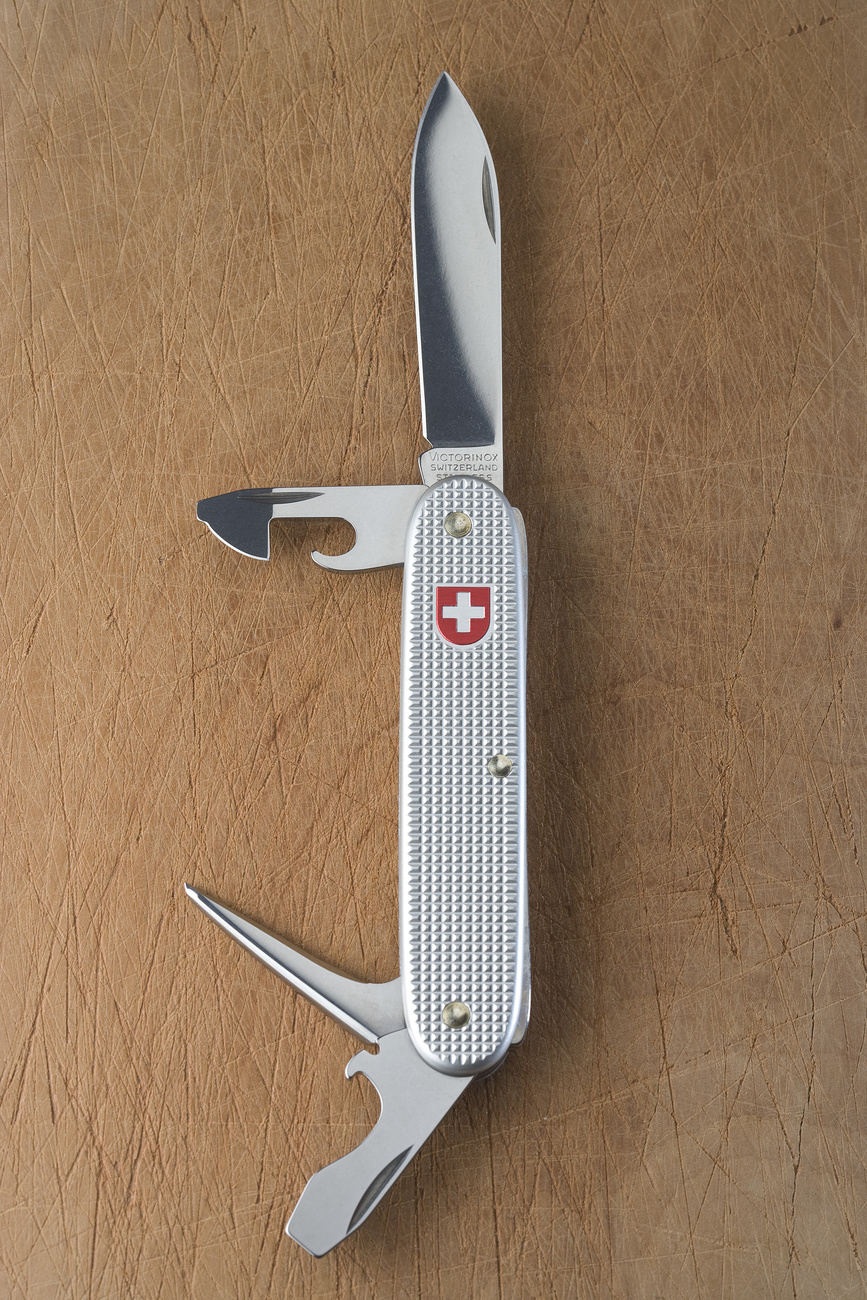
Military biscuits fatten federal coffers

Military brands appeal to entrepreneurs who use them to sell their products. The latest is the Swiss biscuit factory Kambly, which has signed a licensing agreement with the Swiss defence procurement body armasuisse to use the “Swiss Military” trademark on the packaging of some biscuits.
This is the sixth licence that armasuisse has granted for the exploitation of military-related trademarks, which bring in around CHF1 million ($1.1 million) a year to the federal coffers.
The sale of licences for the marketing of military brands is part of a long-standing armasuisse strategy that began with the cooperation with Victorinox for the famous Swiss Army knives.

“It was the marketing of the term ‘Swiss Army’ in connection with the well-known Victorinox military knife that gave rise to the government’s first military brand after the Second World War,” said armasuisse’s deputy head of communications, Jacqueline Stampfli.
“The development and implementation of the government’s strategy for military brands has since then been closely linked to the company Victorinox, whose Swiss Army knife has become a world-famous icon.”
The latest licence to be granted concerns Kambly, a Swiss family-owned company based in Trubschachen in canton Bern. Kambly has been supplying the Swiss army with traditional “petit beurre” biscuits for many years and, with the army’s permission, has been selling these biscuits in a different packaging from the official army packaging for some time without a licence.
+Biscuit maker to cough up Swiss Military royalties
Now, with the licence obtained from armasuisse, Kambly can sell these biscuits under the “Swiss Military” brand in a similar packaging to that intended for the armed forces.
“The proceeds of the licence fees flow into the government coffers and are used to finance global brand protection, brand management, legal fees and other expenses in the brand area,” Stampfli said.
How much does the government earn from these licences? “Earnings fluctuate because they depend on the sales performance of the product, as licence fees are usually a percentage of the annual turnover. In 2022 they amounted to about CHF1 million,” she said.
Politician-driven commercialisation
With the new licence agreement, armasuisse is continuing to implement the policy of commercialisation of military brands demanded by parliament. In 2012 a motion by the Senate’s Security Policy Committee expressly asked the government to better protect military trademarks, to enforce them against unauthorised third parties and finally to license them. Not least because several companies had previously used military branding without asking permission and without paying licence fees to the government.
“The government has only been able to register the brands since 1994, due to the lack of a legal basis,” Stampfli said. “And since 2013 the government has been responsible for the protection and management of the military brands, namely ‘Swiss Army’, ‘Swiss Military’ and ‘Swiss Air Force’, on the basis of a parliamentary motion.”
Also because there is no shortage of imitation attempts. “Since 1996, for example, the government has supported Victorinox in protecting and defending the trademark, in particular against Chinese imitators,” she said.
Following this policy, armasuisse has since concluded several licensing agreements, including one with Swiss Brands, which manages the “Swiss Military” brand and other military brands for various product categories, with Hanowa and Chrono for the “Swiss Military” brand for watches, and with Breitling for the “Patrouille Suisse” brand, also for watches.

In compliance with the JTI standards
More: SWI swissinfo.ch certified by the Journalism Trust Initiative





























You can find an overview of ongoing debates with our journalists here . Please join us!
If you want to start a conversation about a topic raised in this article or want to report factual errors, email us at english@swissinfo.ch.